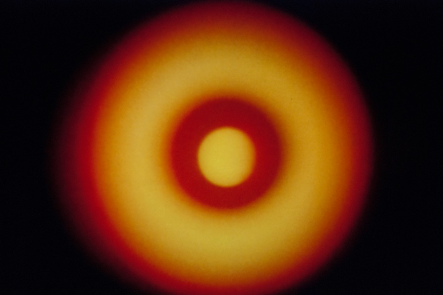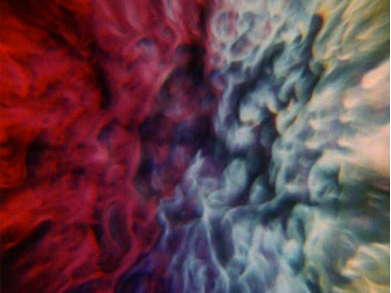By Vik Verplanken
For being used so frequently in popular cinematic discourse, the term ‘subversive’ seems somewhat ill-defined. It is often used as vaguely synonymous to ‘shocking’ or ‘controversial’, even though shock and controversy in and of themselves do not necessarily subvert anything. When film writings – academic ones included – do specify what exactly is being ‘subverted’, the term is usually still being used in a highly questionable manner. Most often, the author will call a film subversive and then point to various intra-filmic elements to substantiate the claim. To give an example off the top of my head, Bobcat Goldthwait’s cynical comedy God Bless America (2011) is presumably called subversive because it blatantly attacks patriotic views on the United States of America. At first glance, this seems reasonable. As the film contravenes the status quo, it warrants being called subversive. However, this notion of ‘subversive’ as a quality that a film either does or does not possess neglects the fact that the subversive ‘effects’ of a film must necessarily occur in tandem with the audience.
For instance, if Pasolini’s Salò, or the 120 Days of Sodom (1975) is rarely watched because it is notoriously scatological, then it will probably not subvert much. Likewise, if God Bless America falls flat for the viewer because of its rather infantile approach to societal critique, then it will fail in subverting its target. Conversely, if an audience already subscribes to the so-called ‘subversive’ notions that a film espouses, then nothing is subverted either, no matter how enthusiastically viewers might cheer. In fact, the opposite would be true. If a film preaches to the choir, it affirms rather than subverts. A film could affirm ideas that run contrary to some status quo, but it does not therefore automatically subvert that status quo, not even in part. The trick to having a film actually be subversive might lie in finding a balance between accessibility and divergence, so that at least a portion of the reached audience has something ‘in themselves’ to be subverted. At the same time, the viewers would not be so estranged from what they see that they become by default closed off to the film’s subversive intent. Vogel, indeed, suggested that cinematic subversion is attained by creating “openness to wonder and suggestion” (1974, 9), not necessarily by attack.
In what follows, I would like to explore this tension in the context of psychedelic cinema, looking at both narrative Hollywood films and avant garde psychedelia. The type of subversion that I would like to focus on is what I would call ‘ontological subversion’. If, following Vogel (1974), we define subversion as the undermining of an established order, then ontological subversion would be the undermining of the viewer’s default assumptions about the nature of reality. Indeed, both psychedelic aesthetics and drugs as a narrative component easily lend themselves to philosophical reflections on our day-to-day experience. Lastly, I should say that although the term ‘psychedelic cinema’ could indicate various things – such as an aesthetic style or a historical period (Church, 2018) – I here use it as an umbrella term to refer to those films that either entirely or in part portray the experiential results of consuming hallucinogenic substances.
As many narrative psychedelic films employ avant garde-inspired techniques in their psychedelic sequences (Church, 2018), let us first consider an example from the experimental tradition, namely Jordan Belson’s Samadhi (1967). This short film consists of a sequence (see clip 1) of transforming color patterns that are reminiscent of the ‘closed-eye visuals’ widely reported by users of substances such as LSD, psilocybin mushrooms and DMT. In principle, the film could be interpreted as ‘merely’ abstract art, aiming to deliver a sensory experience without intending for the audiovisual spectacle to have any meaning, let alone a meaning related to psychedelic states of consciousness. However, two factors would complicate such an interpretation. The first is the title ‘Samadhi’, which is a term derived from eastern mystic traditions that denotes a state of consciousness in which the distinction between subject and object disappears entirely, resulting in revelatory, mystical oneness (Diener, Franz-Karl and Fischer-Schreiber, 1991). Such experiences of ‘self-dissolution’ and transcendent unity, in turn, are very common in psychedelic trips and are arguably what enshrouds the psychedelic experience in such cultural awe. If anything, it is the indistinction between self and other that people take away from their psychedelic experiences as the key lesson learned (see Watts, 2013). Secondly, Belson has stated explicitly that his own psychedelic experiences have informed his work in fundamental ways (Ramaeker, n.d.). It has even has been suggested that his films aim to not only reproduce the type of imagery seen under the influence of psychedelics, but to “actively invoke those states in the viewer” (Ramaeker, n.d.). From this, we can speculate that a film like Samadhi intends to subvert a dualistic ontology by suggesting an ontology that does not subscribe to a distinction between subject and object or self and other. But how, then, does Samadhi try to accomplish this? And does it succeed?
In the absence of semantic prompts, it would seem that Samadhi relies on pure abstraction to evoke an experience that is void of self and other. Contrary to figurative and/or narrative films, Samadhi does not portray a ‘space-time’ world through which experiencing subjects – that is, characters – navigate themselves. Instead, the film could be interpreted as indicating the possibility of subject-less experience, of experience unfolding of itself rather than being anchored in an experiencing subject. This would indeed correspond to potential experiences of close-eyed hallucinogenic visuals. Some users report that experiences of ego-dissolution correlate with the immersion of their consciousness into these visuals, especially if their body awareness disappears with it. Evoking a similar immersion through aesthetics could be another way in which Belson aims to elicit a non-dualistic state of consciousness from the viewer. It seems questionable, however, that such indirect and vaguely suggestive techniques would be enough to subvert a deeply ingrained dualistic ontology. They may hint at an alternative ontology, but we can reasonably expect that the default ontology of most viewers will remain unscathed.
That said, how do narrative psychedelic films compare? There are several possible examples to explore, ranging from counterculture films such as Chappaqua (1966) to Gaspar Noé’s much more recent Enter the Void (2009). However, I will pick Roger Corman’s cult classic The Trip (1967) as an example because it explicitly thematizes the psychedelic experience. Although a case could be made that The Trip is potentially subversive on a societal level, portraying countercultural values as it does, I submit that like Samadhi it would probably fail in being ontologically subversive in any significant sense. The closest that The Trip comes to ontological subversion is a trip sequence in which we witness the dissolution of the tripping subject, i.e. the protagonist Paul Groves (Peter Fonda). As Paul lies down on the couch and closes his eyes, his consciousness drifts off toward a spectacle of transforming colors (see figures 1 & 2), very much reminiscent of Samadhi. For a few moments, there seems to be only pure experience, as the protagonist is entirely forgotten by the film. After the sequence, we return to a world that appears closer to ordinary reality (though Paul remains under the influence for most of the remaining running time). Although the sequence could be taken to suggest that the distinction between experiencer and experienced is illusory, the lack of other prompts in favor of this interpretation makes it unlikely that such an ontological subversion would be imprinted on the viewer. The narrative framework makes it more probable that the sequence will be interpreted as Paul experiencing an absence of himself, thus ultimately keeping the distinction between subject and object intact. That is, of course, if the sequence is philosophically interpreted at all and not written off as ‘merely’ hallucinations produced by the LSD. Considering that the film does nothing to thematize the sequence – at least not ontologically – the latter possibility is in fact more likely.


It would seem, then, that The Trip has less potential for ontological subversion than Samadhi because it employs a narrative framework that affirms the subject-object duality. Samadhi makes no explicit invitation to consider an ontological alternative, but it at least did not affirm the ontological status quo. Must we therefore conclude that narrative is inimical to the goal of ontological subversion? Not necessarily. In fact, in my view it is Ken Russell’s Altered States (1981) that has the most potential for ontological subversion out of all the films from the psychedelic canon. Like The Trip, its psychedelic sequences are built into a narrative framework, but unlike The Trip, the narrative works synergistically with the psychedelic sequences to elicit ‘openness and wonder’ to ontological alternatives. Unlike Samadhi, in turn, it is more explicit in its thematization of metaphysical questions and hence more likely to nudge the viewer in the direction of philosophical inquiry.
Indeed, Altered States walks the tightrope between accessibility and estrangement without falling off on either side. Its traditional narrative framework makes the film more accessible than an avant garde experiment like Samadhi, hence making it more likely that the viewer will be receptive to its ontologically subversive message. Unlike The Trip, however, the narrative explicitly deals with the ultimate nature of reality, inviting the viewer to consider that the psychedelic sequences are ontologically on par or even ‘more real’ than the world as it is represented in non-psychedelic sequences. In this sense, the seemingly dualistic narrative framework becomes a means to question the ontological assumptions that are built into that very framework. The story of Altered States, after all, deals with Jessup (William Hurt), a psychology professor on a rabid quest for spiritual truth. Losing faith in academic forms of inquiry, he begins to self-experiment with an unknown psychedelic substance so as to arrive at the true nature of reality experientially, rather than via the intellect.
As in Samadhi and The Trip, the main psychedelic sequences of the film are characterized by the disappearance of the experiencing subject, Jessup, and the revelation of a domain of pure experience. What makes Altered States unique, however, is that the narrative explicitly invites the viewer to consider the ontological veracity of these sequences, as the main character is zealously convinced that they are indeed veracious. What’s more, at the end of Altered States it becomes impossible to discard the psychedelic experience as a subjective experience located within the confines of an experiencing subject. Instead, the experience is ‘externalized’— that is, it becomes shared by the other (sober) characters (see clip 2). They, along with Jessup, are cast into a domain beyond comprehension. In other words, the psychedelic experience attains the status of an objective event, with the implications of this touching on the very fundaments of the diegetic world. At the end of the film, we do not see a Jessup that comes to his senses after seemingly becoming mad. Instead, the other characters perforce acknowledge the reality of his experiences after having repeatedly declared him insane. Jessup does end up abandoning his quest, but not because he was on a delusional path to truth. Rather, the shock of his experiences have led him to re-appreciate the illusory world of ‘ordinary reality’ that he was trying to transcend. Jessup’s ontological trauma remains with him, however, and perhaps with the viewer as well.
Despite the film’s excellent balance between accessibility and estrangement, I must stress that I still submit the ontological subversion of Altered States as potential in nature and in no way guaranteed. Much still depends on the openness of the viewer and his/her capacity to be influenced by the invitations to inquire into the ontology of experience. Although Altered States, in comparison to other psychedelic films, is a better recipe for ontological subversion, it is also likely that the film’s sci-fi framework is enough for many viewers to discard its philosophical content. Conversely, for an exceptionally ‘open’ viewer, the suggestive methods of Samadhi may be enough to elicit a revision of deeply held ontological ideas.
As a closing note, I also wish to state that although I have evaluated Samadhi, The Trip and Altered States based on their ontologically subversive potential, I have by no means intended to reduce their value to only this factor. In considering the worth of a film, there is of course much more to consider. Regarding The Trip, I do not even assume that it intended any ontological subversion. Nonetheless, I have considered it eligible for discussion in the context of subversiveness because it does portray ontologically divergent experiences and because a film might have subversive potential regardless of authorial intent. Moreover, our discussion of it has provided insight into the ingredients necessary for cinematic subversion, which was one of the goals of this short article.
Read Vik Verplanken’s article “Revisionary metaphysics in Ken Russell’s Altered States (1980): On the ontological subversiveness of psychedelic sequences” in New Review of Film and Television Studies.
Sources
Church, David. 2018. “The Doors of Reception: Notes Toward a Psychedelic Film Investigation”, Senses of Cinema, 87. Retrieved from: http://sensesofcinema.com/2 018/feature-articles/the-doors-of-reception-notes-toward-a-psychedelic-film-investigation/
Diener, Michael S., Franz-Karl Erhard, and Ingrid Fischer-Schreiber. 1991. The Shambhala Dictionary of Buddhism and Zen. Shambhala, ISBN 978-0877735205
Ramaeker, Paul. N.d. “The Uncensored Cortex”: Psychedelia and American Avant-garde Film in the 1960s. Screening the Past, 41. Retrieved from: http://www.screeningthepast.com/issue-41-first-release/the-uncensored-cortex-psychedelia-and-american-avant-garde-film-in-the-1960s/
Vogel, Amos. 1974. Film as a Subversive Art. London: Weidenfeld.
Watts, Alan. 2013. The Joyous Cosmology: Adventures in the Chemistry of Consciousness. Novato: New World Library.

